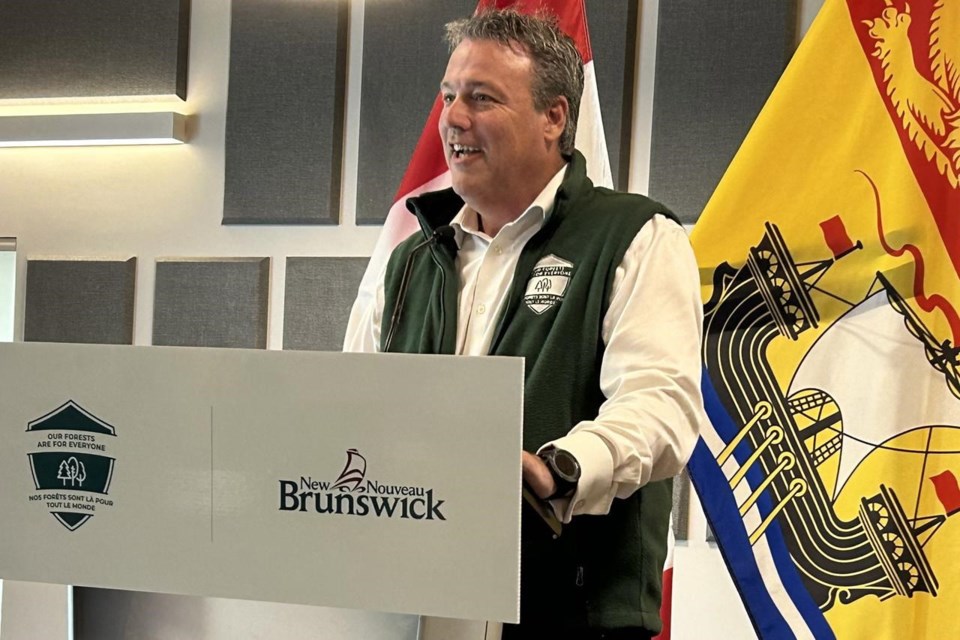FREDERICTON — New Brunswick officials say the province is prepared for this year's fire season, with 143 trained firefighters, 24 student recruits and two more water bombers.
The province's 10-year average is 246 fires per year, with 4.5 square kilometres of forest burned, Environment Minister Mike Holland told a news conference about the government's preparations.
But while the number of fires last year was below average, he said they were far more destructive, torching 8.6 square kilometres. He said 202 of the 209 wildfires in 2023 were caused by humans, and seven were from lightning.
"In fact, subsequent years going forward are going to be the same way," he said.
"So it is so important ... that we have a full contingent of people who are at the ready at a moment's notice to be able to ensure that New Brunswickers stay safe."
Roger Collet, a wildfire prevention officer, said the government has 143 trained firefighters and 24 student recruits who are ready to battle blazes this season. Last year the province had six aircraft to carry water; this year it has eight, he said.
"It covers us for what we normally have here," he said. "If we had a super bad season as some of our neighbours did, we would definitely have to bring in extra help, but we do have sufficient help for right now."
In Nova Scotia, there was an unprecedented string of wildfires last year in the southwestern corner of the province and in the Halifax area, which forced more than 16,000 people out of their homes and destroyed 151 houses and dozens of other structures.
New Brunswick has seen a "troubling" trend in which wildfires have not only become more frequent but also more intense, Collet said. "It's a stark reality that demands our attention and action. The devastation caused by wildfires of last year was unprecedented during wildfire season."
New Brunswick's fire season begins on the third Monday of April. Fires usually start in the south and move north as the summer rolls on, he said.
While New Brunswick had "lots of precipitation," over the winter, Collet said, it fell in the form of rain and not snow, which means it's possible grass fires might pop up sooner than usual.
Meanwhile, federal Natural Resources Minister Jonathan Wilkinson said on Monday that the latest spring fire forecast suggests that a combination of above-average temperatures and limited rain and snow have left drought-like, tinderbox conditions across much of the country.
The combination of climate change and population growth is leading to an increase in the risk of wildfires on the fringes of or near urban areas.
Nearly four million Canadians — roughly one in 10 — live in areas where combustible forests are prevalent, Wilkinson said.
This report by The Canadian Press was first published April 16, 2024.
The Canadian Press



